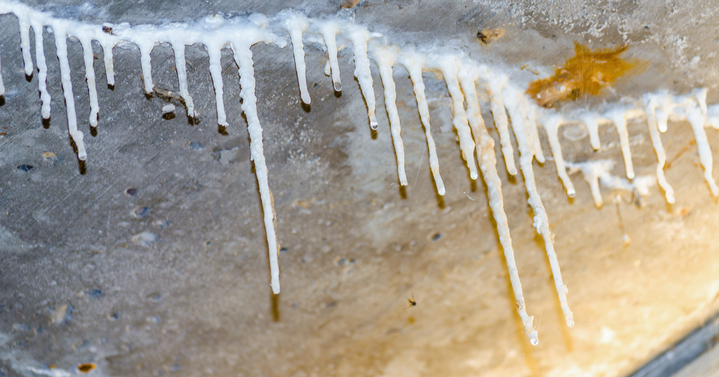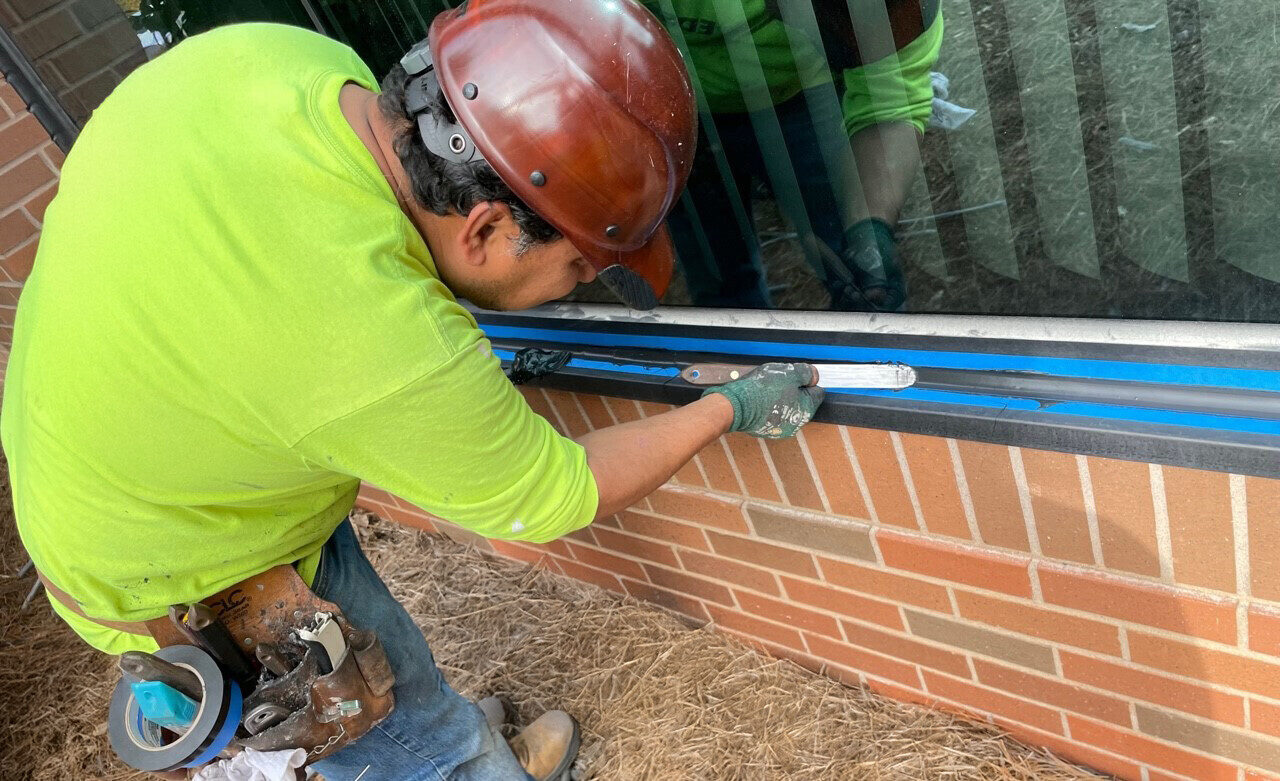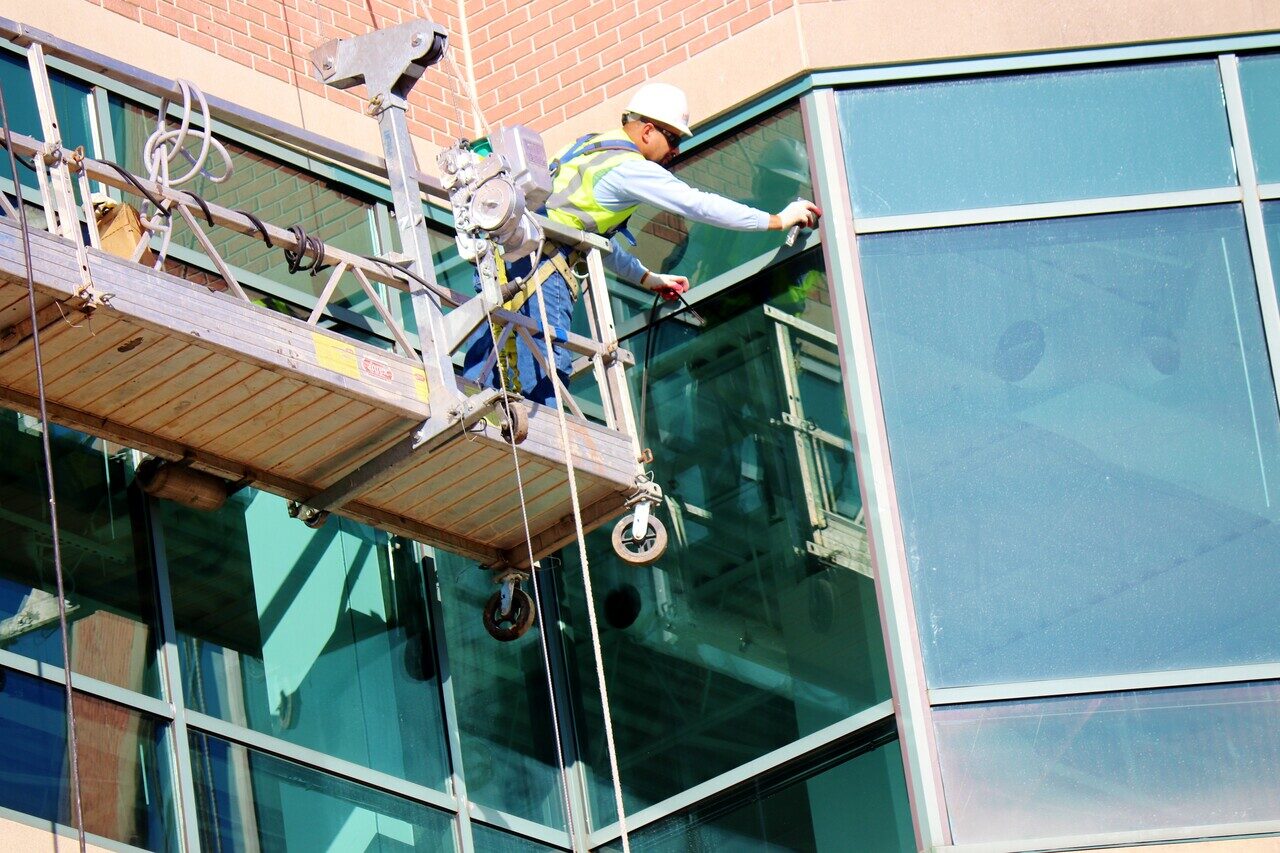Many different building materials are visible in commercial buildings and structures, and all of them need some sort of waterproofing membrane or sealant to protect them from the elements. Of all the building materials available today, concrete is still among the most common, particularly when considering exterior facades and visible components of most commercial structures these days. Concrete, of course, is a porous material that is easy to use on taller skyscrapers and buildings. The lighter weight of concrete, compared to other materials, is due to that porous composition that lets it breathe freely and absorbs water and air. Commercial concrete sealers can make a world of difference in preserving the aesthetics and durability of the façade and exterior components and many interior aspects. Understanding the various types of concrete sealers available and their role in concrete repair and maintenance is a critical part of commercial building management and maintenance.
Waterproofing and Sealing Basics
A lot goes into applying waterproofing sealants to commercial buildings and dealing with resealing concrete, however, including hazard awareness, safety concerns, injury prevention, and integral concerns. According to the official OSHA website, “the hazards experienced in the sealant, waterproofing, and restoration industry are common to the construction industry in general. These include health hazards, such as asphalt fumes, lead, silica, and solvents; and safety hazards, such as falls from elevation, awkward and heavy lifting, flammables, and power tools. An important step in addressing these hazards is to conduct task-specific hazard analyses to identify what hazards to expect and to then plan for their control.” Sealing is essential for protecting porous surfaces from damage and maximizing the lifespans of building facades. Commercial building waterproofing envelopes can protect against:
- Water damage
- Temperature damage
- Chemical damage
- Stains and discolorations
- Abrasions and chips
- UV and sun damage
- Cracks and separations
- Shock and vibration damages
- Foot traffic wear and tear
However, choosing the wrong sealant can cause problems with the appearance and integrity of the building. It can also lead to wasted time, money, and resources if the sealant needs to be removed or reapplied more often than what would otherwise be required. Correcting commercial concrete sealer mistakes is a costly and labor-intensive process, so choosing the proper waterproofing sealant and correctly installing the envelope is of the utmost importance for a successful and long-lasting seal. Failure to do so can lead to a myriad of commercial building water damages.
Safety And Hazard Control When Applying Different Types of Concrete Sealers
This essential aspect of commercial building maintenance and upkeep requires specialized training and a unique skill set. It is always best to leave waterproofing and leak investigation work to the pros. They can ensure a proper application, thanks to extensive training with the various products, chemicals, equipment, and gear needed to do the job.
Working with commercial concrete seal experts makes it easier to ensure they follow all proper guidelines, regulations, and protocols while working. As highlighted by the Sealant, Weatherproofing, & Restoration Institute, “Where feasible, workplace hazards are prevented by effective design of the job site or job. Where it is not feasible to eliminate such hazards, they must be controlled to prevent unsafe and unhealthy exposure. Once a potential hazard is recognized, the elimination or control must be done promptly.” These procedures often cover essential measures that can include:
- Using manufacturing skills, equipment, and techniques when needed to address issues.
- Maintaining the facility and regularly using equipment to keep things up and running.
- Using managerial controls to reduce exposure frequency and combat natural forces.
- Training supervisors to perform site inspections and safety checks.
- Establishing safety and medical stations on-site to ensure staff safety at all times.
- Addressing any safety hazards as soon as they are known.
- Implementing water leak detection checks and protocols throughout the building.
- Providing proper training for all team members on equipment and machinery.
- Maintaining strong lines of communication and making it easy to share data, reports, and updates.
Training makes up a significant component of management. Keeping up effective safety protocols for waterproofing and maintenance teams requires constant observation and inspections. Likewise, careful monitoring of critical aspects of building renovation and upkeep is also needed. Proper training must address the responsibilities of both management and employees at the site. Employees should be able to recognize hazards and have the ability to observe something or someone and know that there is a problem or concern that requires attention.
The Basics of Commercial Concrete Sealing
Concrete sealing involves the application of a specially developed compound to the surface of the concrete or other stone materials that will shield it from the damaging effects of the weather and environment. Choosing from the many types of concrete sealers and coatings can sometimes be overwhelming, but it gets easier when basic classifications break it down.
Topical film-forming sealers create a layer of waterproofing on top of the material and dry to form a protecting coating or shell of sorts. A penetrating concrete sealer soaks into the concrete to waterproof it and allows for a more natural look and feel to the stone while still making it water-resistant.
Concrete pavement requires a great deal of time and money, but several key benefits arise after a seal coat has been applied:
- Blocks water intrusion.
- Prolongs the longevity and durability of the material.
- Provides an extra layer of protection against wind, rain, sun, and other elements.
- Creates a barrier against oil, chemicals, aging, etc.
- IMakes snow melt faster and water dry faster so it won’t soak into the material.
- Keeps the cost and frequency of basic repairs and maintenance down.
- Improves curb appeal and keeps the exterior looking clean and neat.
When to Apply a Sealant Coat to Concrete
In most cases, the sealant should go on the building as soon as the new concrete will support the weight of the installer and any scaffold ting and apparatuses needed. Sometimes the concrete must be fully cured before application; that is determined and accounted for during the planning stage.. Curing most concrete usually takes up to 30 days.
Regardless of timing, applying sealant is a can’t-skip step because the building envelope is a critical part of the exterior structure. Virtually all pavements benefit from being seal-coated, and industry experts recommend applying the initial waterproofing application within the first year of construction. The process should be repeated every two to four years, or however often is needed based on a specific factor, as part of a general maintenance plan. On business properties, professionals should apply commercial concrete sealers for the best results through small touch-ups on an as-needed basis.
What Does the Process of Concrete Sealant Application Look Like?
How a sealer gets applied to the building can profoundly affect the final outcome and performance. Therefore, it is important to choose the proper sealant and application method combined with environmental factors and other conditions Using the right tools makes it easier to achieve the best coverage rate and get the coating just right to seal the building without it being too thick and bulky or failing to get the layer thick enough or evenly applied. While there are some general rules for sealant services and applications, all trained and experienced applicators refer to specific guidelines and handling protocols for each product. The most important rule to remember is that less is more, regardless of the method used to apply the many types of concrete sealers.
Spray
- Used with thinner coatings and more liquid or watery products.
- Commonly used for a product that soaks into the material.
- Often applied in multiple layers to allow for deeper penetration.
- Dries fairly quickly and can be applied in layers easily.
- It can be difficult to cover larger areas evenly since sprays dry so fast.
Roll
- Used with thicker coatings that have a paint- or glue-like consistency.
- Commonly used with coatings that cover the exterior and dry hard.
- Layers can easily be applied to larger areas with a brush or rollers.
- Much slower to dry due to the thicker, wetter consistency.
- It may be a little cumbersome to work with for smaller applications.
Given the competitive market and high demand for waterproofing services, commercial building managers must fully understand the available options. As highlighted by Waterproof Magazine: “Currently, liquid-applied membranes account for 67.2% of total vertically-applied product last year, and are the fastest-growing segment. Advances in material chemistry, including polyurethanes, spray-applied air barriers, and rubber polymers ensure liquid-applied coatings will continue to be the fastest-growing segment of the commercial waterproofing market. Sheet membrane applications will see less growth. Global Marketing Insights estimates they will average 6.2% growth annually through 2022.” Both methods of application can be effective, and one is not necessarily better than the other outright. It depends on the type of sealer being applied, where it is being used, the type of material being treated, and many other specific factors.
Topical Sealants Protect Building Surfaces From Wear and Tear
There are several types of topical sealants for building waterproofing, each with its own set of pros and cons. It is important to keep in mind that topical sealants often require some sort of pre-treatment, sanding or other preparation of the material before application to ensure the coating adheres fully.
Acrylic
Readily available and among the most common types of topical waterproofing seals used on commercial buildings, acrylic sealers can also help enhance the beauty of concrete and brick facades. They protect against water infiltration, heat and cold, mold and mildew, and general wear and tear. Acrylic sealant is also among the most cost-effective choices.
Pros
- Available in satin, low-gloss, high-gloss, and tinted finishes
- Easy to get and apply to a variety of surfaces
- Affordable and easy to budget for resealing concrete
Cons
- Less durable than other sealants available
- Needs to be reapplied more frequently
- Certain finishes can discolor the façade materials
Epoxy
This type of waterproof treatment is a good choice when a longer life span is needed. Like other affordable sealants, epoxy is easy to apply with spray or roll applications. Suitability largely depends on the exact product used and the size of the coverage area.
Pros
- Seals well and blocks out moisture and water
- Reflective and helps to reduce weathering from the sun
- Dries clear to preserve the color of the materials
Cons
- Can be used only on fully cured concrete
- Often takes longer to dry than other products
- Risk of fumes and odors greater during the curing process
Polyurethane
Polyurethane produces a durable coating that is resistant to wear. It also offers UV resistance, gloss, and color enhancement. Polyurethane waterproofing materials provide long-term protection that looks great and can help shield building materials from wear and tear and breakdown due to exposure to the elements.
Pros
- Long life span if maintained properly
- Ideal for larger areas of coverage and application
- Can easily be used on an array of materials and finishes
Cons
- Multiple layers of the application are usually needed
- Must be maintained and replaced regularly
- Cold and wet environments can affect curing and sealing
Subtypes:
Aromatic polyurethane
The least expensive of all polyurethane coatings, this formulation is best used as a primer or intermediate coat and should be paired with other types of sealants.
Aliphatic polyurethane
Commonly used on commercial buildings, aliphatic polyurethane offers a stronger and more durable coating that is UV stable and temperature resistant.
Polyurea
The most expensive of options in this category, polyurea, is not used as often as other topical sealants for waterproofing and building maintenance. Cost notwithstanding, polyurea offers excellent UV resistance and weathering characteristics.
Pros
- High tolerance for heat and UV impact
- Gives a high gloss finish with applied in multiple layers
- Resistant to scratches and chemical abrasions
Cons
- Is one of the more costly waterproofing coatings
- Usually needs multiple layers when applied to building facades
- Super-fast cure time doesn’t leave time to fix mistakes with the application
Polyaspartic
Less expensive than polyurea but still more costly in general than other topical sealants, polyaspartic is still a viable choice worth considering. Polyaspartic sealants provide a highly protective film layer that offers the durability and flexibility needed to withstand weather and environmental factors.
Pros
- Easy to apply and cures without much difficulty in good weather
- Super durable envelope blocks out water and the elements
- Long life span means less reapplying and less maintenance
Cons
- More expensive than the majority of other sealants
- Cures fast, so need a quick and error-free application
- Not as resistant to chemical exposure
Penetrating Sealants to Reduce Risk of Corrosion and Concrete Spalling
These kinds of sealants are popular for commercial buildings because they typically don’t require much surface preparation. No sanding or chemical treatments are needed ahead of time. The surface needs to be clean of any debris or chemical applications and dry when the commercial concrete sealers application process begins.
Silicates
These waterproofing sealants work to bind with the materials in the concrete itself and fuse with the material. This helps with concrete strengthening thanks to the crystalline formation silicates take when they cure and harden. This additional strength reinforces the actual concrete itself while also making it more water-resistant.
Pros
- Adds to the strength and stability of the façade materials
- High heat and humidity protection once fully cured
- Easily soaks into the porous material and dries quickly
Cons
- Multiple layers and applications are needed to get full coverage
- Needs special care with application to ensure uniform coverage
- Requires specialized setup and multiple applicators to cover larger areas
Silanes
Silanes are frequently used for sealing in parking garages, bridge decks, building facades, and other concrete structures. Silanes penetrate the material and forms durable and stiff sheets within the surface to form a waterproof layer of protection that holds up to long-term exposure to weather and the elements.
Pros
- Wonderful at repelling water, moisture, salts, dirt, and other impurities
- Anti-corrosive properties are great for city applications
- Dries hard and glossy to improve its reflective nature
Cons-
- Can be difficult to apply in some situations and larger quantities
- Is a bit on the pricey side compared to others
- Requires more than one layer and often needs regular re-application
Siloxanes
Siloxanes typically can be found on facades made of concrete, brick, stucco, and similar materials. It is a unique formulation that penetrates the material and forms a thin protective layer over the outer surface itself. Siloxanes are excellent water-repellent substances.
Pros
- Slows the growth of mold, mildew, and algae on buildings
- Durables and holds up well to elements and exposure
- Great for highly porous materials that need deeply penetrating coverage
Cons
- Can be difficult to apply in some situations
- Is expensive to use on larger buildings as multiple applications are needed
- Not as good on smoother materials like cinder blocks and stone slabs
Siliconates
Like other penetrating concrete sealers, these sealants do not alter the appearance or texture of whatever material they are applied to. Their formulation allows for adequate absorption into the materials while providing an outer coating of protection as well. They also can often be applied in just one or two passes.
Pros
- Slows the growth of mold and mildew and prevent algae formation
- Dries clear and hard and doesn’t discolor the surface of the building
- Easy formulation applies quickly and can be used in many settings
Cons
- Hot and dry environments can affect the application and absorption
- Not good for application in windy conditions
- Difficult to apply and requires specialized application and handling
Fluorinates
These sealants are also popular for waterproofing in commercial settings because they do not change the underlying materials’ color, texture, or general appearance. They also provide excellent coverage rates and are considered to be some of the best when it comes to overall topical protection.
Pros
- Works well as a primer coat to prep surfaces for other sealants
- Easy to mix and apply with fast curing time
- Durable layer holds up well and works with a range of material types
Cons-
- Several applications are generally needed full penetration and coverage
- Care must be taken when using with other sealants
- Is a bit more susceptible to temperature extremes than other coatings
Regardless of the type of waterproof coating you choose and how it is applied, the most important thing is that the buildings be sealed and protected against water intuition and other damages. Waterproofing and building envelope system maintenance and inspection must be part of the regular building management and repair schedule.
A commercial building management service provider can help ensure the envelope seal is maintained to protect the building at all times. Many benefits come from proper commercial waterproofing; here are three of the most impactful:
- Provides Structural Integrity.
Waterproofing protects the building’s exterior and helps keep the foundation, walls, support, roofing system, and all vital structural areas from weakening, thus keeping the entire building sturdy and secure. - Enhances Indoor Air Quality.
When water seeps into the interior materials of the building, such as the walls and ceilings, it creates a breeding ground for microorganisms like mold and mildew that can lead to serious health problems for the occupants. - Ensures Compliance with Building Codes.
Minor water damage can easily be dealt with and repaired. Still, suppose issues extend for some time, and the severity of the damage becomes too great. In that case, the building can become structurally unsafe, which will bring about code violations and related penalties and fees.
Considerations When Choosing Between a Surface Sealant Versus Penetrating Sealant
Building waterproofing services include many aspects of façade maintenance and envelope upkeep. In addition to understanding the different sealants, their formulations, and the application methods, building managers who are weighing whether to use a surface concrete sealant or a penetrating concrete sealer must also consider these critical points:
- Surface age.
Some sealants work best when applied to freshly cured or relatively new concrete and materials. Add penetrative formulations as soon as possible because the build-up of oils, dirt, chemicals and other pollutants can affect how easily and deeply the sealant can penetrate. The longer the material is exposed to the elements, in general, the less effective penetrating seals will become. In older building applications, topical coatings are usually more effective and are a better investment in the long run. - Repair versus new construction.
Sometimes it might be necessary to use more than one type of sealant due to the nature of the material and how it has been installed. The same sealant can be used throughout the building, even for patchwork and minor repairs. . However, building additions and areas of large-scale renovation might need something different due to the material type, age and location. Building managers will need to carefully record and track when workers are resealing concrete or adding new sections. - Building codes and engineer specifications.
Sometimes specific codes and requirements can impact the kind of sealants needed, especially for new constructions or additions that can fall under updated codes and regulations. The original building may be grandfathered into specific guidelines, while new additions may need different protection. It is best to consult with the builders and engineers because some sealants are more suitable than others for protecting certain materials. Following recommendations from the engineers and builders can help take some of the guesswork out of choosing a waterproofing sealant.
- Type of concrete and its density.
Building managers and maintenance teams will also want to consider the type of concrete that is used, how dense it is, and how it is used in the building’s construction. Some concrete is more porous and would benefit from a penetrating seal while others may be smooth, dense and can easily handle a topical application. The location of the material and what sort of things it will be exposed to daily can also play into the final decision of waterproofing application choice.
- Local environmental conditions.
Environmental exposure can have a significant impact on the building, especially on the waterproof envelope. What environmental factors will the building face on a daily, monthly, and yearly basis? Things such as sun exposure, high and low-temperature extremes, storm cycles and severity, typical seasonal weather impacts, chemical and pollution exposure, and other impacts such as salt, smoke, and so forth. All of these can impact the building exterior and affect the sealants used.
- Budget and resource restrictions
The final consideration for choosing the best waterproofing sealant comes down to business presences and limitations. If the ideal or first choice sealer is not an option due to budget concerns, the second best will do because some waterproofing is better than none. However, expenses can extend beyond the initial application. Opting for a cheaper coating may mean more applications and more work down the road, impacting budgets and finances. Commercial waterproofing is an investment for both short- and long-term needs.
Extend Your Concrete Assets’ Longevity by Choosing The JOBS Group for Commercial Concrete Sealers Services.
Heavy rainfalls, floods, snow, and high humidity can cause concrete to soak in water. The addition of continual auto and foot traffic can also wear down structures and compromises integrity over time. All of this can lead to structural and aesthetic problems without routine applications and without resealing concrete regularly. Water seepage over time can lead to the degradation of the concrete and can weaken it. Oxidation will also occur over time as the concrete is exposed to the elements all day every day, leading to discoloration and a brittle texture that can easily crack and chip.
Whether you are considering penetrating concrete sealers or topical concrete coatings for your commercial hi-rise building, JOBS has the resources you need. Waterproofing is necessary for commercial buildings or any other edifices when there is a need or desire to prevent water from entering the structure and damaging it. These seals also protect against unsightly mold and algae growth, and protect against discoloration and damages caused by dirt, chemicals, UV rays, and other factors. Many surfaces of commercial buildings need waterproofing seals, with roofs, walls, foundations, facades, and other integral areas. Creating a waterproof envelope around the building is a critical aspect of maintaining the structural integrity of the building.
To protect your property with reliable waterproofing, envelope creation, and envelope restoration, contact us today to discover commercial concrete sealers that are right for your building maintenance needs. We can help you unravel the mystery of the many types of concrete sealers and help you find the one that is right for you. Request a consultation with Valcourt Building Services now to get started.



